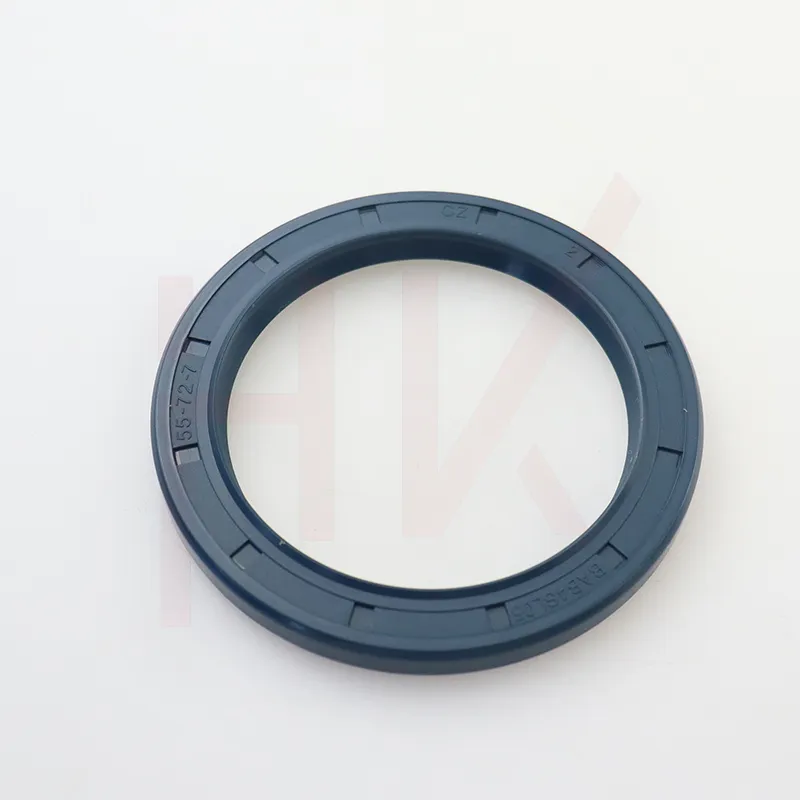Sep . 24, 2024 14:35 Back to list
Cylindrical Wiper Seals for Enhanced Performance and Durability in Hydraulic Systems
Understanding Cylinder Wiper Seals A Comprehensive Overview
Cylinder wiper seals are critical components in hydraulic and pneumatic systems, playing a vital role in ensuring efficient operation and longevity of machinery. These seals are designed to prevent contaminant ingress and fluid leakage from hydraulic cylinders, thus maintaining the integrity and performance of the system. In this article, we will explore the significance, types, materials, and installation considerations of cylinder wiper seals.
Significance of Wiper Seals
The primary function of a cylinder wiper seal is to keep foreign particles, such as dirt, dust, and moisture, from entering the cylinder. Contaminants can degrade the hydraulic fluid and lead to wear and tear of moving parts, potentially causing system failures. By effectively sealing the cylinder, wiper seals help minimize maintenance costs and prolong the lifespan of hydraulic components.
Types of Wiper Seals
There are several types of cylinder wiper seals, each designed for specific applications
1. U-Cup Wipers These seals are shaped like a U and are common in many hydraulic applications. They provide effective sealing due to their design and are easy to install.
2. Lip Wipers Featuring a lip that extends over the edge, lip wipers provide a tighter seal and are particularly effective in environments with high levels of contamination.
3. V-Ring Wipers These seals consist of a flexible ring that can adapt to various conditions, making them suitable for a range of applications.
4. Double-Wipe Seals Equipped with two wiping edges, these seals are designed for systems that experience frequent contamination, offering superior protection.
Materials Used in Wiper Seals
cylinder wiper seal

The material selection for wiper seals is crucial as it impacts durability and performance
. Common materials include- Nitrile Rubber (NBR) This is a widely used material due to its excellent resistance to oil and abrasion. It is suitable for moderate temperature ranges.
- Polyurethane (PU) Known for its high resilience and abrasion resistance, polyurethane seals are used in high-performance applications.
- Fluoroelastomer (FKM) This material is highly resistant to heat and chemicals, making it ideal for extreme environments.
Installation Considerations
Proper installation of cylinder wiper seals is essential for ensuring their effectiveness. A few key considerations include
- Surface Preparation The sealing surfaces must be smooth and free of debris or scratches to ensure a proper seal.
- Correct Sizing Ensure that the selected wiper seal fits correctly within the cylinder to avoid leaks or premature wear.
- Lubrication Applying a light film of grease to the seal before installation can enhance its lifespan and performance.
In conclusion, cylinder wiper seals are indispensable components that protect hydraulic systems from contaminants while ensuring efficiency and longevity. Choosing the right type, material, and installation method is crucial for optimal performance. By understanding these aspects, engineers and technicians can ensure the robust operation of hydraulic cylinders across various applications.
-
TCN Oil Seal Metal Ring Reinforcement for Heavy Machinery
NewsJul.25,2025
-
Rotary Lip Seal Spring-Loaded Design for High-Speed Applications
NewsJul.25,2025
-
Hydraulic Cylinder Seals Polyurethane Material for High-Impact Jobs
NewsJul.25,2025
-
High Pressure Oil Seal Polyurethane Coating Wear Resistance
NewsJul.25,2025
-
Dust Proof Seal Double Lip Design for Construction Equipment
NewsJul.25,2025
-
Hub Seal Polyurethane Wear Resistance in Agricultural Vehicles
NewsJul.25,2025
-
The Trans-formative Journey of Wheel Hub Oil Seals
NewsJun.06,2025
Products categories
















